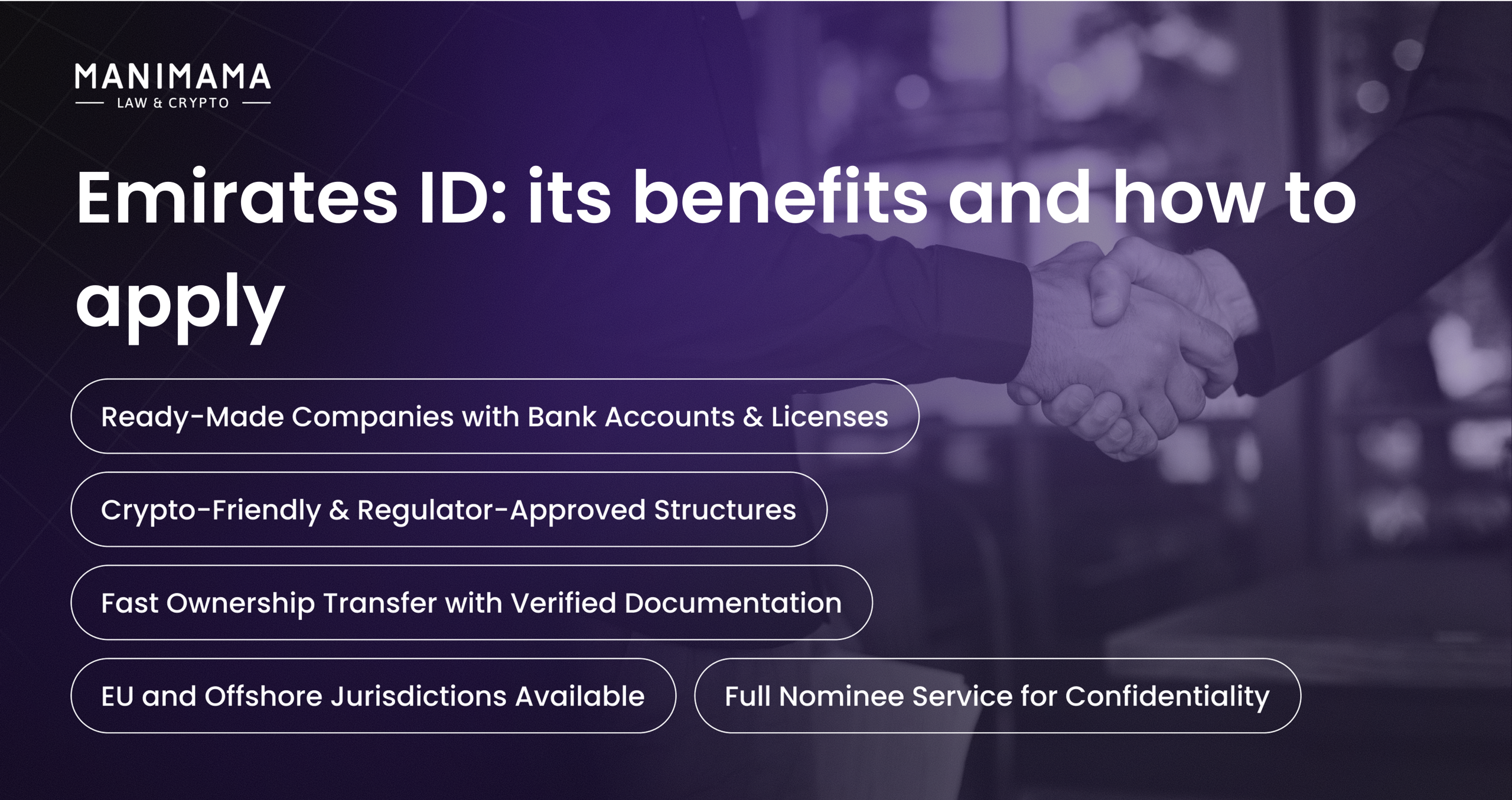Emirates ID is the primary identification document in the United Arab Emirates, granting individuals access to essential services such as banking, healthcare, digital government portals, and telecommunications. For citizens, residents, and foreign nationals, it functions as the core element of identity verification and digital authentication. Understanding how the Emirates ID works has become a necessary step for anyone planning to live, work, invest, or conduct business in the UAE.
The Emirates ID is the official identity card issued to people residing in the UAE. It combines biometric information, a unique personal identification number, and advanced digital features that allow secure interaction with both government bodies and private institutions. In practice, the card is used during almost every administrative or commercial interaction within the country, from opening a bank account and visiting a hospital to signing digital documents or accessing e-services.
The issuance, regulation, and digital infrastructure behind the Emirates ID are managed by the Federal Authority for Identity, Citizenship, Customs & Port Security (ICP). This authority oversees population registration, biometric standards, residency integration, and the digital UAE Pass ecosystem, ensuring that the system remains unified, secure, and consistent with federal legislation.
The card is mandatory for Emirati citizens, GCC nationals residing in the UAE, and all foreign residents who hold valid residency visas. Citizens rely on the card as their primary national ID, GCC nationals use it for residency identification, and expatriates use it to confirm their immigration status and access nearly every government or commercial service. The system is designed to provide a unified identity verification mechanism for all categories of residents.
How the Emirates ID is used in daily life
In the UAE, the Emirates ID is indispensable. Banks require it when creating new accounts, telecom operators request it to issue SIM cards, employers use it during onboarding, and landlords rely on it when drafting tenancy agreements. Hospitals and clinics use the card for patient registration, while government entities rely on it as the gateway to all major online services. The card is integrated with immigration systems, which simplifies travel within the GCC and speeds up border procedures. In everyday scenarios, the Emirates ID acts as both a physical identification document and the key to the country’s digital ecosystem.
The requirement of valid residency before applying
Foreign nationals can obtain an Emirates ID only after securing a valid basis for residency. The card is directly linked to the applicant’s immigration status, so residency approval is the mandatory first step. Citizens and GCC nationals apply under different regulations, but the underlying requirement remains the same: the individual must be registered within the UAE’s population system before the identity card can be issued.
Ways to obtain residency before applying for Emirates ID
The UAE offers several residency pathways, each tailored to different categories of individuals. Although the final outcome is the same — a residency permit that enables the issuance of an Emirates ID — the requirements and conditions vary significantly.
Residency through company formation is one of the most accessible options. A foreign national may register a company on the mainland or in a free economic zone, receive the relevant corporate documents, and apply for a Partner or Investor Visa. This visa type is standard, valid for two to three years, and distinct from the Golden Visa category.
Residency through investment is possible under the Golden Visa program. This route requires a minimum personal investment of AED 2,000,000, either through an approved investment fund, company capital contribution, or demonstrated corporate taxes. In exchange, the applicant receives a 10-year residency status with extended advantages.
Residency through real estate purchase is another option. A five-year residency visa becomes available when an applicant buys property worth at least AED 2,000,000, either as a single property or a combination of several units.
Residency through employment remains one of the most common routes. The employer handles the work permit and residency visa application. Standard visas are issued for two years, while highly skilled professionals earning from AED 15,000 per month may qualify for the five-year Green Visa.
Stages of the Emirates ID application process
The application process consists of three main stages: online submission, biometric enrollment, and card issuance. It begins with registering an application through the ICP website or an accredited typing center. The applicant creates an account, fills out the required information, uploads documents, and pays the government fee. The system provides a reference number and instructions for the next steps.
The second stage includes mandatory biometric collection. This requires a personal visit to an ICP-authorized service center, where fingerprints, a facial scan, and other biometric identifiers are captured. The applicant receives an SMS notifying them of the appointment details or additional steps if needed.
The third stage involves the production and issuance of the Emirates ID. The processing time is usually around five days, though it may vary. Applicants can track their application through the ICP website. Once ready, the card can be collected at a designated center or delivered via courier.
Company formation and Emirates ID: the most common pathway
Many foreign entrepreneurs obtain residency — and therefore the Emirates ID — by registering a company in the UAE. The process begins with selecting an emirate, choosing a legal structure, and completing company incorporation. The new business receives its trade license and corporate documents, which form the basis for applying for a residency visa as a partner.
After company registration, the residency application is submitted through the relevant immigration system, depending on the jurisdiction. Upon approval, the applicant receives an entry permit. Those inside the UAE may proceed with a change-of-status procedure, followed by medical examination, biometric enrollment, and activation of the residency visa. The Emirates ID is produced shortly thereafter. Typically, the entire process from company incorporation to receiving the Emirates ID takes one to two weeks.
Why the Emirates ID is essential
The Emirates ID is a central element of life in the UAE. It connects an individual’s residency status with virtually every aspect of daily activity, from banking and healthcare to digital services and government procedures. Regardless of the residency pathway — business, investment, property, or employment — the Emirates ID formalizes a person’s legal identity and supports seamless integration into the country’s advanced administrative system.
The procedures involved, from selecting a residency route to completing biometrics and final issuance, are efficient but require careful compliance. For entrepreneurs and investors, especially those entering through company formation, the process is among the fastest and most straightforward in the region.
As the UAE continues to advance its digital infrastructure, the importance of the Emirates ID only increases. Its integration with smart services, electronic signatures, and national authentication platforms ensures both convenience and security. Specialists at Manimama Law Firm provide full support at every stage, assisting with company formation, visa processing, documentation, and Emirates ID issuance to ensure a smooth and compliant experience.
The content of this article is intended to provide a general guide to the subject matter, not to be considered as a legal consultation.










